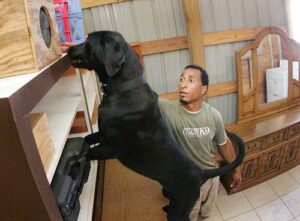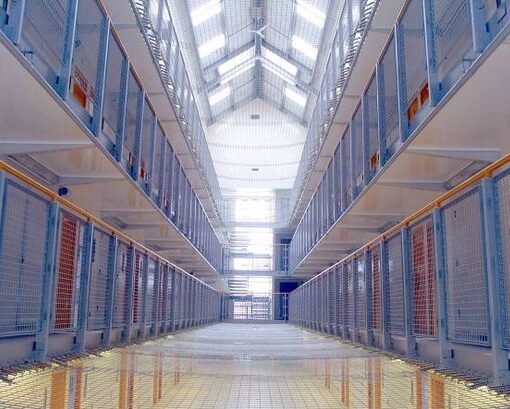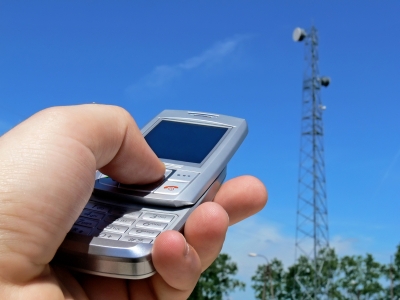 Two dogs for the entire State of Florida are not going to be the solution to contraband cell phones. New cell phones will be smuggled in as replacements as soon as they are found…
Two dogs for the entire State of Florida are not going to be the solution to contraband cell phones. New cell phones will be smuggled in as replacements as soon as they are found…
They can be stashed inside a bar of soap or a pair of shower shoes in state prisons.
Like weapons and drugs, cellphones hidden by inmates are being found more and more inside correctional facilities around the country, and the penal institutions in Florida are no exception, state corrections officials say.
With cellphones getting smaller and thinner, it’s easier for visitors and even corrections officers to smuggle them in to inmates and for prisoners to hide them just about anywhere, said Florida Department of Corrections spokeswoman Gretl Plessinger.
But since late 2008, the state has armed itself with a weapon that’s literally sniffing cell phones out of the most clandestine of hiding places in Florida’s prisons: two cellphone-sniffing dogs.
The canines — A German shepherd named Uno and a Belgian Malinois named Razor — have been hunting down cell phones in the state’s prisons since late 2008. Since then, the dogs and corrections officers have found and seized 2,602 cellphones inside the state’s 17 major prison facilities.
The dogs are initially trained near New Smyrna Beach at Southern Coast K-9. The operation is run by Bill Heiser, a former investigator with the Volusia County Sheriff’s Office. Heiser, along with a team of trainers, is dedicated to working with German shepherds, Labrador retrievers and Belgian Malinois to detect drugs, explosive devices and cellphones.
“We look for dogs that are hoodlums,” Heiser said with a smile last week at the training compound. “We want the ones that no one wants, we want dogs with high drive.”
Heiser travels to Europe a few times a year, and each time he returns with 30 to 40 canines. The dogs must be at least a year old because if not, they have “too much puppy” in them, he said.
And even though the dogs believe they’re at constant play as they train to seek out their targets, it’s really a lot of hard work and determination, Heiser said.
The dogs receive intense training for about six weeks before they are given to the handler who will become the animal’s master and constant companion.
Heiser walked through a series of training areas set up with different rooms outfitted with furniture and obstacles designed to teach the dogs to seek out their targets.
The animals are given commands in German — the universal language for training such canines — and within seconds they locate through scent the object they’re ordered to find.
The targets are hidden in small wooden pits filled with empty plastic bottles, stacked several inches high.
If the dog can wade through the bottles, ignore the loud noise they make as the animal’s quick paws step on them, and sniff out the object he is ordered to find, then that dog is good enough to serve a government agency.
“This (exercise) will make or break them,” Heiser said.
Standing nearby, Kevin Dean, supervisor of the contraband interdiction division for the state’s Department of Corrections, agreed.
“If the dog becomes frustrated and he gives up, then that dog is no good for this,” Dean said. “If he becomes distracted by the noise that’s no good either.”
Trainer Hector Joglar brought out a sinewy 15-month-old German shepherd named Kuba. Another trainer, Newton Villalon, held up a toy and Kuba’s eyes darted directly to the object, pulling on his lead as he tried to lunge at it.
When the toy was thrown in one of the plastic-bottle pits, Kuba was given a command in German and the canine dove into the pit, a frenzied mass of muscle and hair searching for his prize. When he found it, he was given verbal praise and plenty of attention from Villalon and Joglar.
That’s how the dogs are trained to seek out cell phones and other contraband. They believe they are playing a game and their only objective is to find that toy — contraband — and bring it back to their handler, Dean said.
They are taught to ignore and overcome obstacles in order to find the contraband.
“Their (the dogs’) aim is to please the master,” Dean said. “To the dog, searching for drugs, explosive devices or cellphones, is a game; and they want to win that game to please their master.”
Heiser explained further: “It’s like having a 7-year-old child looking for an egg in an Easter egg hunt.”
Another German shepherd, 19-month-old Atos, demonstrated exactly what the two men had just described.
In one of the training rooms set up with washing machines and other furniture, Villalon held Atos by his leash with one hand and a toy-decoy in the other hand. Suddenly, Villalon spun around, holding the toy high up in his left hand. Atos climbed onto the washing machine and bounced off the walls, never taking his eyes off the prize in his trainer’s hand.
It was all about the focus, no matter what Atos had to jump on and climb over to get the toy.
Next the trainers brought out two black Labrador retrievers who found cell phones hidden behind cabinets within seconds. Each time, the canines stood under the area where the cellphones were hidden, staring straight up and letting out a low groan. The dogs are also trained to find the phones under vehicles, Heiser said.
It’s all necessary.
Inmates — who face a third-degree felony if caught with a cellphone — are getting creative when it comes to stashing the items, corrections officials said. They’re not just slipping them under mattresses anymore, but burying them in bars of soap and concealing them in the shower shoes they must wear when they bathe.
According to the Department of Corrections, 60 percent of the cell phones found in the state’s prisons are inside the inmates’ housing areas. Another 11 percent are found at the prison entrances. The remaining 30 percent are found all over prison grounds.
In January, one of this country’s most notorious criminals — Charles Manson — was found with a cellphone under his mattress at Corcoran State Prison in central California, according to a USA Today report. It was the second time Manson had stashed a cellphone.
Back in Florida, Heiser and Dean would not reveal what canines are sniffing for when they’re searching for a cellphone — they don’t want the inmates to know.
- Multi-Blockchain System for Inmate Forensics - April 2, 2024
- Blockchain to Secure Attorney-Inmate Privacy for Prison Calls - June 28, 2023
- meshDETECT® Announces Grant of Ninth Patent For Blockchain Wireless Services - August 26, 2022




